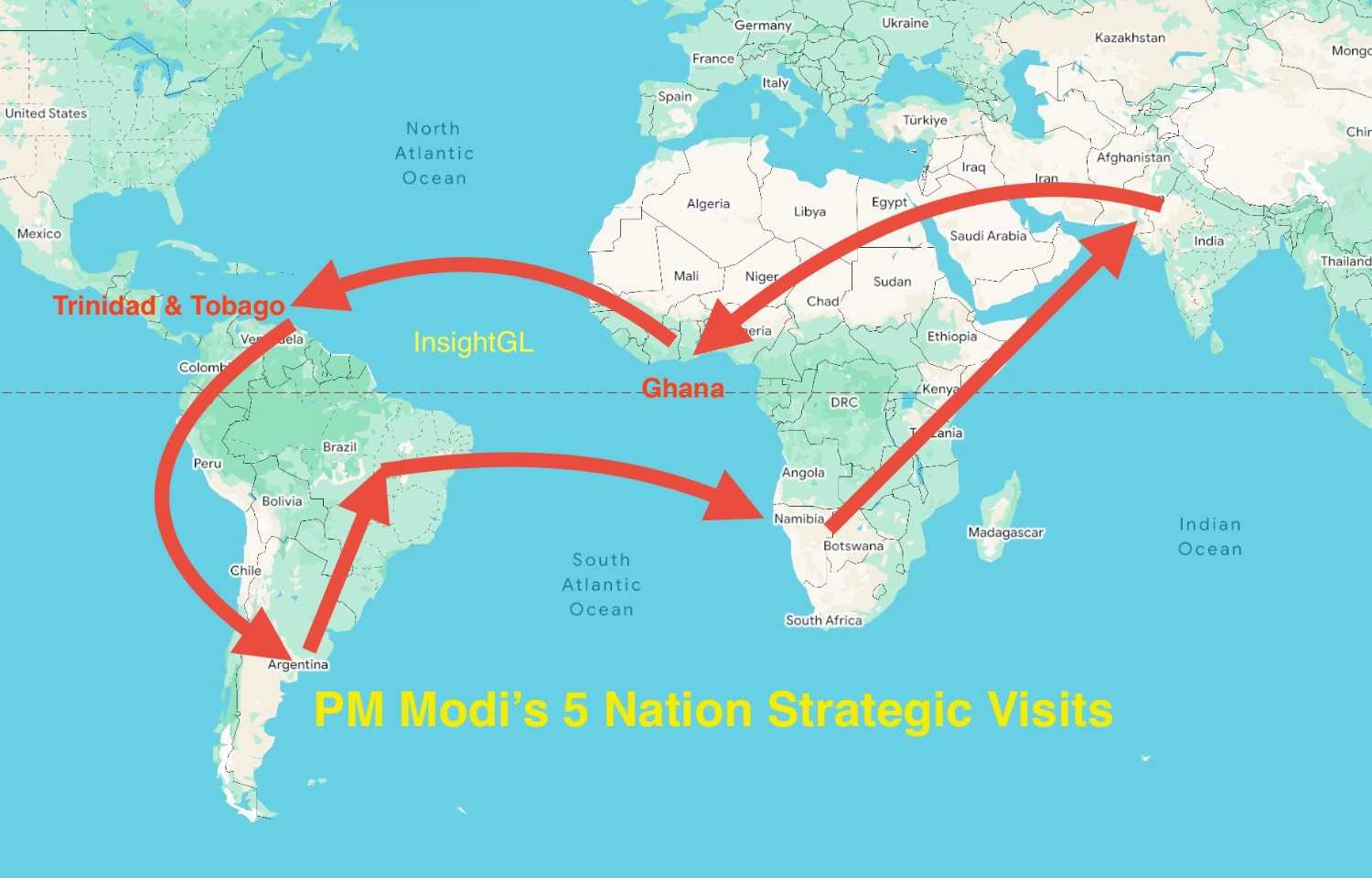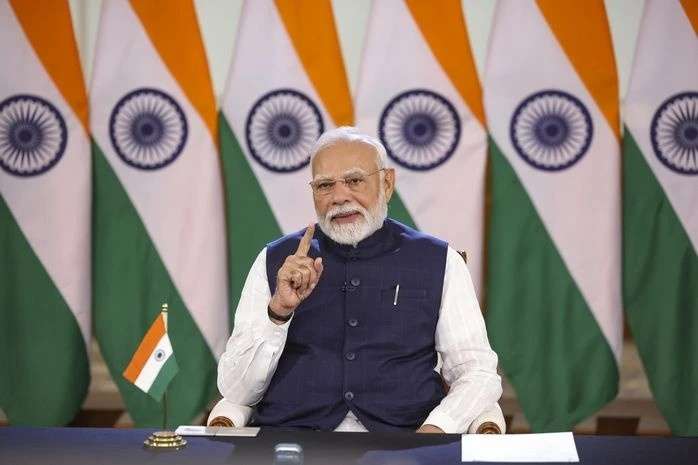India’s mineral diplomacy strategy, as demonstrated by the visits of Prime Minister Narendra Modi to Ghana, Trinidad and Tobago, Argentina, Brazil, and Namibia from July 2 to 9, 2025, is a strategic endeavor to secure important minerals and energy resources that India is highly reliant on for its green energy transition, industrial development, and strategic autonomy. These visits target countries with significant reserves of lithium, hydrocarbons, uranium, and other critical minerals to lessen China’s control in global supply chains and address India’s increasingly resource dependency.
The stock performance of electric vehicle related companies has significantly declined, and the main reasons for this concern are threefold. First, China is the dominant supplier of rare earth elements and has raised tariffs and has chosen to limit exports affecting India’s entire supply chain. Second, India reduced import tariffs on EVs, from roughly 75–100% to now just 17%, which made foreign EVs easier to obtain and affected domestic manufacturing. Third and most significantly, the high cost of lithium-ion batteries (the most important and expensive part of EVs) has shown India’s dependency on imports for lithium and forced policymakers to act quickly. This explores how the PM Narendra Modi visits to Ghana, Trinidad and Tobago, Argentina, and Namibia have the potential to secure these minerals, given the associated resource matrices and outcomes of the trip.
Argentina, commonly referred to as “Messi’s country,” is a participant of the Lithium Triangle together with Bolivia and Chile, and has the second-largest lithium reserves and the second-largest shale gas and fourth-largest shale oil reserves in the world. In 2024, Khanij Bidesh India Limited (KABIL), a public sector enterprise has finalized five concession agreements with CAMSAY, the Argentine state enterprise undertaking lithium exploration and development. These five concession agreements are an important milestone in India’s mineral diplomacy and illustrate the growing maturity of India’s international resource strategy. Argentina is also interested in India’s BrahMos missiles and helicopters, and even defense systems. Geopolitically, Argentina is a “Uniting for Consensus” group member with Pakistan, Italy, Turkey, etc. which prohibits India’s bid for permanent UN Security Council membership – albeit with diplomatic alignment remaining whole.
Namibia is also a strategic partner with a wealth of uranium and rare earth elements. both of which are essential for India’s nuclear energy and electronics sectors. Namibia has received investment of over $800 million and supplies diamonds that are polished in Surat, Gujarat, India. The third largest uranium producer for the world, supplies about 11% of global uranium supply, making it a crucial partner to India’s civilian nuclear energy program. India’s engagement with Namibia is part of a strategic initiative to diversify critical mineral supply chains and mitigate China’s overwhelming control of critical minerals which has 60% of REE production and 85% of processing.
Ghana, India’s first stop, was previously known for gold and coffee exports. However, after the discovery of lithium reserves in 2018, Ghana has become the world’s 10th largest and Africa’s 3rd largest holder of lithium. India has had a presence here since the 1990s, with over 820 projects and ₹2 billion in investments. A $450 million line of credit has been extended for mining and infrastructure, and India is pursuing a comprehensive partnership encompassing energy and defense.
Trinidad & Tobago, an island nation in the Caribbean Sea, is of great strategic and energy importance. It is geographically located next to the Columbian Channel, it has large deposits of hydrocarbons, ammonia, and methanol, and it has a legacy and history of producing energy for the last century. Trinidad & Tobago is the second largest exporter of methanol in the world, and it is also a leading exporter of ammonia. Apart from energy, India’s relationship with Trinidad & Tobago extends to cultural ties to a country with a woman prime minister in Kamla Persad-Bissessar. Cooperation between India and Trinidad & Tobago also extends to influencing the diversification of sources of energy as well as improving India’s refining capacity.
Conclusion
In total these engagements showcase India’s initiative to build resilient supply chains, mitigate China’s preeminence in critical minerals, and foster the country’s ambitions for EVs and renewable energy. India is diversifying its partnerships along economic, cultural, and strategic lines to affirm its role as a global player related to resource security, but geopolitical alignment, including a complicated relationship with Russia, and pressures in India’s domestic market for EVs and renewables raises challenges which will only be overcome through ongoing diplomacy and policy persistency.

